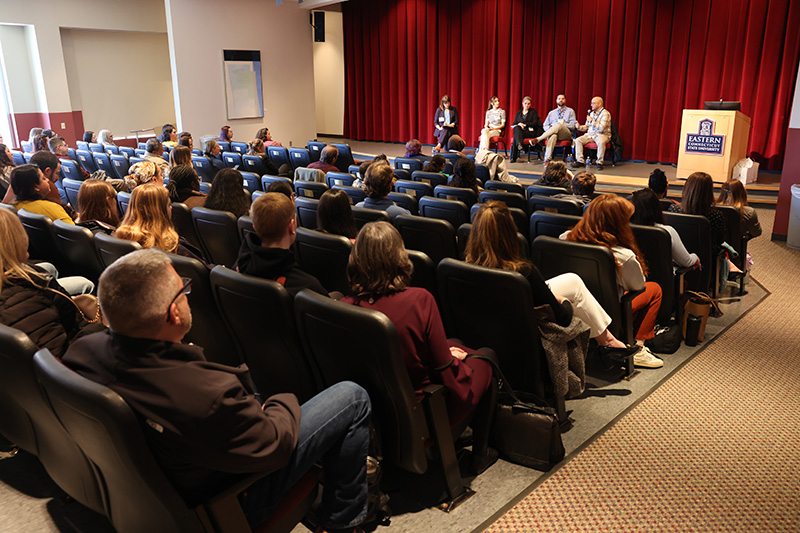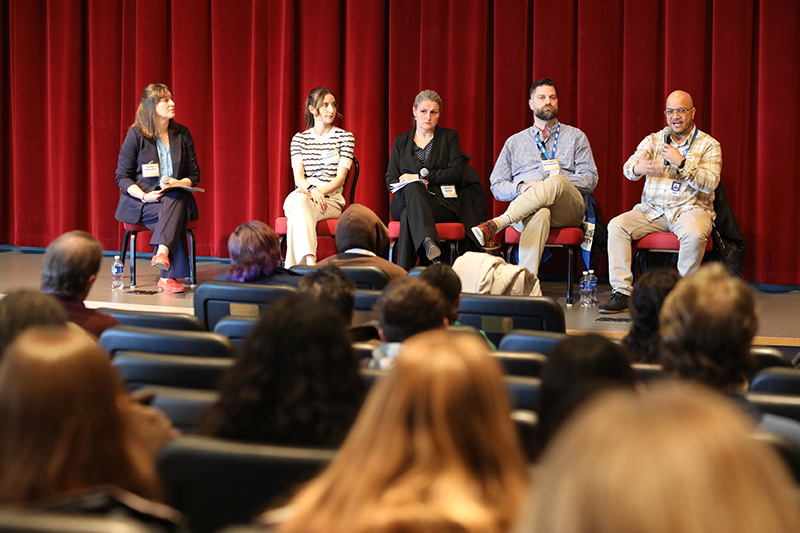- Apply
- Visit
- Request Info
- Give
Eastern convenes forum on harm reduction and the opioid crisis
Written by Darlene Orozco B. '28
Published on April 17, 2025
In light of the ongoing opioid addiction crisis, Eastern Connecticut State University hosted an event titled "Building Partnerships in Eastern Connecticut to Address the Opioid Epidemic" on April 9. The event explored how Eastern can be a partner in supporting efforts in Connecticut to continue to address the opioid epidemic through facilitated conversations and a discussion panel on harm reduction practices.
The panel, titled “Harm Reduction in Action,” brought together leading voices in the local harm reduction movement to share real-world strategies, policy updates, and personal stories. It was moderated by Megan Stanton, assistant professor of social work, who has more than a decade of harm reduction research experience.
According to experts at the panel, accidental opioid overdose deaths have decreased for three consecutive years, a trend they attribute to the growth of harm reduction strategies across the state.
“We have a third year in a row that we’re trending downward in terms of opioid related deaths,” said panelist Luiza Barnat, director of opioid services at the Connecticut Department of Mental Health and Addiction Services. “2021 was our worst year, but with naloxone distribution in the state, it’s been steadily declining from more than 1,500 deaths to less than 1,000.”
Barnat outlined the state’s approach to overdose-related policies and how harm reduction fits into them. She explained that since 2016, Connecticut has received more than $100 million in federal and settlement funds to expand naloxone distribution, outreach engagement through mobile treatment units, and recovery support.
Harm reduction refers to policies that minimize the negative impacts of behaviors without eliminating the behaviors completely. “Harm reduction is like using a seatbelt — you may still crash, but your chances of surviving go up,” explained panelist Chris Ortiz, program director at the Connecticut Harm Reduction Alliance (CTHRA).
Harm reduction translates into practices that the CTHRA offers in services such as wound care kits, providing Naloxone (Narcan) to reverse overdoses, and operating outreach vans.
Ortiz encouraged students going into social work and nursing-related fields to join the CTRHA and see harm reduction happening in real life. “We go where people don’t go, so ride along with us and see what we do," he said. "It will change your perspectives on what harm reduction can do.”
Panelist Makayla Lamson explained she works directly with patients receiving medication-assisted treatment (MAT) for substance use disorders at United Community and Family Services (UCFS). Their program combines psychiatric care, behavioral health services, and wraparound supports like housing, food security, and transportation.
“We try to treat the whole person and their needs,” said Lamson. “If basic needs are not met, they can’t be successful in whatever their goal is, not just recovery.”




